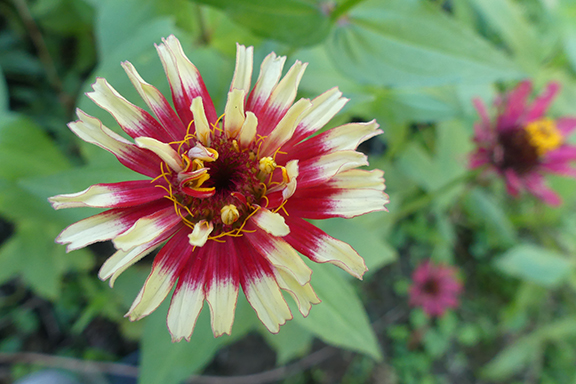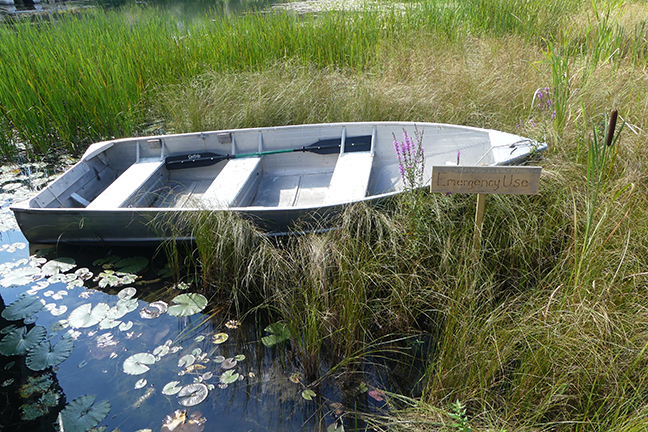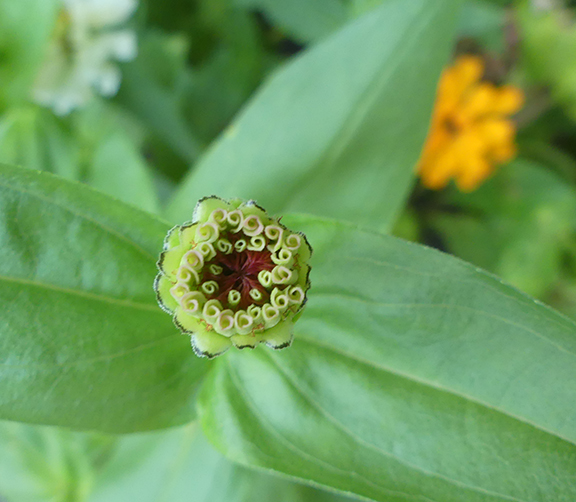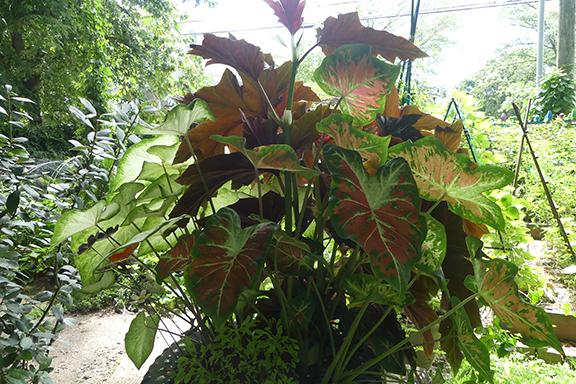John and I spent the last two and a half weeks of August in Northern Michigan. The first week+, we stayed at my family’s cottage between Alanson, MI and Petoskey, MI. It’s in a small settlement of homes and cottages and is a very short distance away from Crooked Lake. The area is beautiful and full of a lot of land that’s been set aside as nature preserves by the Little Traverse Conservancy. Many of these preserves have trails across them, so John and I always do a lot of hiking on them. This year we visited a few new preserves as well as some old favorites. For one, the nature preserve on Oden Island in Crooked Lake, we canoed over to it, parked our canoe on the shore, and hiked around before canoeing the rest of the way around the island.
Other fun included a trip to Pond Hill Farm, a place that serves delicious food highlighting its own locally grown ingredients and wonderful wines, beers, and hard ciders that incorporate things like Michigan cherries and blueberries. Of course, we also spent time on a Lake Michigan beach. There are several nice ones to choose from, but this time we went to a favorite that’s part of another Little Traverse Conservancy nature preserve. Yet another notable excursion was taking the hand-powered ferryboat to Sanctuary Island in Alanson, MI. The entire boat ride is about 30-40 feet at most, but it’s a unique experience. Once on the tiny island, you can walk around on boardwalk trails and enjoy the Crooked River flowing by.
(Click on the individual photos below for more details about what you’re seeing in each one.)
One of the highlights of our vacation was a trip John and I made to explore some new-to-us areas. We went to the Leelanau Peninsula and South Manitou Island. To get to the Leelanau Peninsula, we had to go through Traverse City, and while there we stopped at the Botanic Garden at Historic Barns Park. There were a lot of beautiful gardens and plants to see there–plus the gravestone of Traverse Colantha Walker, a champion cow. The site was once a farm connected to the Traverse City State Hospital that housed mental patients from 1885-1989. The patients worked on the farm and produced food for the hospital. Colantha was a special dairy cow who lived there and was part of that food production. We had a good time exploring the gardens and the trail lined with little fairy houses that people have made. There are quite a few trails on the property that we should go back and explore more.
Soon it was time for lunch, so we headed north up the Leelanau Peninsula to some of the many wineries and cideries that it’s known for. First we stopped at Black Star Farms, a winery that also features farm-to-table food. We tried a couple wines along with some delicious sandwiches. After that, we took it slow and stopped to sample hard cider at two cideries: Two K and Tandem Ciders. Both were excellent, but our favorite was Two K.
Then we headed to Leelanau State Park on the northernmost tip of the Leelanau Peninsula where we had camping reservations. This campground was what had inspired the trip. Some friends had stayed there last summer and described the campsites on the Lake Michigan beach. By the time we made our reservation, the sites that are right on the beach were taken, but we got lucky and found a nice campsite that was just across the little campground road from Lake Michigan. On our first evening there, we got to enjoy a really nice sunset from our campsite.
The next day was an even bigger adventure: we took a ferry to South Manitou Island. It’s a small island in Lake Michigan and is located near Sleeping Bear Dunes on the mainland. It is officially part of the Sleeping Bear Dunes National Lakeshore. At one time, people lived on the island, but now it’s all part of National Park Service land. South Manitou was important for Great Lakes shipping and has a major lighthouse on it. If you’d like to know more, this National Park Service website has A LOT of really interesting information. I think the information about the lighthouse and its keepers is particularly interesting.
The South Manitou Transit company runs ferries across from Leland, MI to South Manitou twice a day, so you can make it a day trip or you can bring camping gear and spend the night. We bought sandwiches from the Village Cheese Shanty in Leland (it is apparently what everyone does), and found a spot on the ferry, the Mishe-Mokwa. There were plenty of people aboard, but it wasn’t completely full so there was room to spread out a little. There were groups of backpackers aboard and several families, including one whose great-great-grandparents had lived on the island. It was a good day to be out. The water wasn’t too rough. We made good time and got a good look at a passing Great Lakes freighter and the North Manitou Shoals Light. It took an hour and a half to get to the island.
For a little island, there’s plenty to see. John and I decided to hike to the Shipwreck of the Morazan. It was listed as about 7 miles round-trip, assuming you followed the trail. Well, the trail was supposed to go out from the lighthouse, but the lighthouse is under a lot of construction and all the trails around it were closed or blocked. We stumbled around looking for the way and feeling our limited time on the island ticking away. John suggested we give up on looking for the trail and start walking around the island on the beach, so that’s what we did.
It was a really pretty day and very beautiful on the beach. We successfully navigated over the rocky shore and around several clumps of downed trees poking out into the water. But it seemed to be taking much longer than expected. We hoped there would be a way to get back up the bluffs to the main trail above us, but nothing turned up so we kept walking. Eventually, we made it to the Theodore Beck homestead where there was a trail up the bluff. Back on track, we hiked to the bluff overlooking the wreck and then to the old growth cedars. Then it was time to make the trek back to the dock to catch the ferry. Our feet were tired and sore, but we even made it back in time to take the last tour up to the top of the lighthouse. It was an absolutely amazing view from the top.
On the ferry ride back, everyone was warm, tired, and happy from their adventures on the island. The kids ran around and played tag. The adults got adult beverages and laughed and talked. It was festive. I decided to get a Mishe-Wokwa Margarita because the whole thing including the silly, hand-lettered signs and the insinuation that this was an awesome bar on a little ferry cracked me up. From the ferry, we drove back to our campsite at Leelanau State Park, made hobo pies in a campfire, and called it a day. The next morning we drove back to the cottage (though I did look for some Leland Blue Stones on our way out of town).
When we got back to the cottage, John was feeling a little off. He’d been exposed to two lung-fulls of allergens several days before and had been feeling a severe allergy flare-up ever since. However, it seemed like the allergies should have resolved by then. To be safe, he took a covid test…and it was positive. Soon, I wasn’t feeling too good, either.
Thankfully, we were at a place where we could isolate and didn’t need to get out or find alternative accommodations. We had three days of vacation left and then extended our stay by an additional three days. We mostly stuck around the cottage feeling like absolute trash. Periodically, we took short walks at more Little Traverse preserves. It wasn’t a fun way to extend our vacation, but, thankfully, we were in a nice place to have an extended vacation.
The cottage is full of decades-worth of stuff my family has taken there. My favorite find this time around was an old bottle of Vicks’ VapoRub that was in a vintage blue glass jar. I used it to try to break up my nasal congestion, but the old bottle promising relief from the “distress” of colds made me smile. My fever lasted the longest, and once it was definitively gone we made the long drive home.





























































































































































































































































































































































































































































































































































































































































































































































































































































































































































































